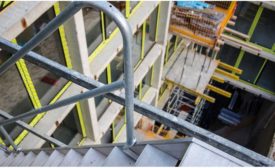Articles by T.J. Lyons
Construction Risk Management
To Save Lives in Construction, Eliminate Unsafe Choices
Knowledge of human behavior shows us how to prevent decisions that lead to accidents
Read More
The latest news and information
#1 Source for Construction News, Data, Rankings, Analysis, and Commentary
JOIN ENR UNLIMITEDCopyright ©2025. All Rights Reserved BNP Media.
Design, CMS, Hosting & Web Development :: ePublishing

